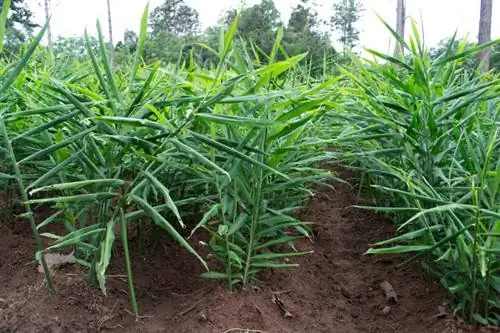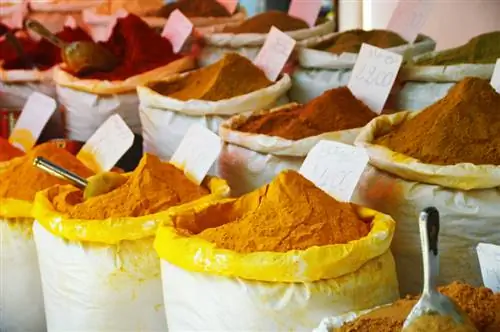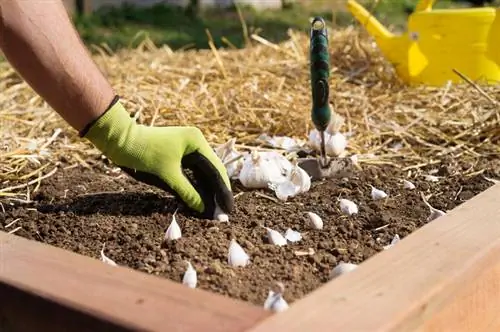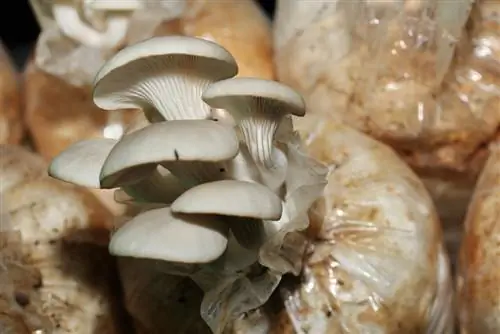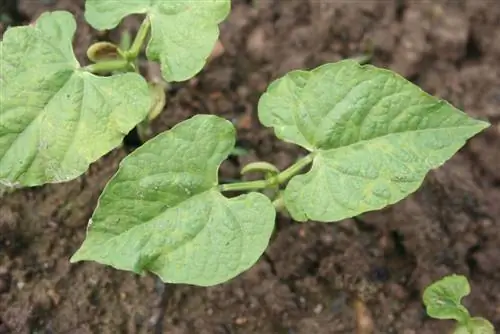- Author admin [email protected].
- Public 2023-12-16 16:46.
- Last modified 2025-01-23 11:19.
Over the last decade, ginger has found its way to us not only as a tea and spice. More and more people are discovering the different varieties and species of ginger as attractive flowering plants for the home and garden.
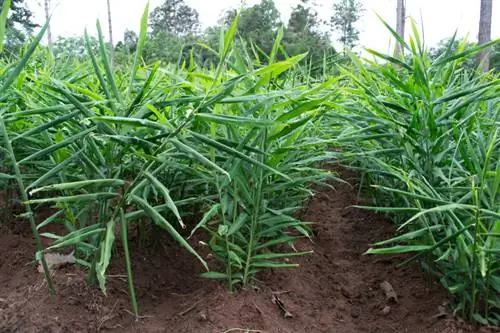
How can you grow ginger yourself?
Growing ginger is easy by growing commercially available ginger tubers in humus-rich soil substrate. Choose a warm, sunny location and ensure there is enough water. Ginger leaves and tubers are harvested in late summer and autumn.
Spice ginger made from commercially available ginger tubers
The spiced ginger we know from the supermarket (Zingiber officinale in Latin) can be grown relatively easily from commercially available tubers. Raising by sowing has practically no importance when growing this type of ginger. Place the purchased ginger bulbs as fresh as possible in a bucket with a humus-rich soil substrate in order to encourage the tropical plant to bloom on the windowsill or in the garden.
The propagation and harvesting of ginger as a container plant
If you want to harvest commercial ginger for consumption, you can sprout commercially purchased tubers in a bucket from March. The green leaves can then be processed into tasty salads with lots of aroma in late summer and autumn. As soon as the leaves of the ginger turn yellow in autumn, the bulbs can be dug up and dried and used as a spice.
Overwinter ginger bulbs in the cellar
In order to overwinter the harvested ginger tubers for re-cultivation the following spring, in our latitudes the tubers cannot be overwintered in the ground like other potted plants. Rather, ginger bulbs should be removed from the ground and cleaned and dried with a cloth. This prevents mold from forming and the tuber can be kept dry and cool in the dark for the winter until it sprouts again.
Different types of ginger with exotic flower shapes
Apart from the commercially available spice ginger, there are also various types of ginger that can be grown from seeds. These often have impressive flower shapes. Since these are predominantly tropical plant species, they should be cultivated as seasonal potted plants in warm and sunny locations.
The subfamily Alpinioideae of the ginger family
The various species of this subfamily occur naturally mainly in Australia and Malesia. When cultivated correctly, the various subspecies produce exotic-looking flowers in shades of purple, red and orange. These types of ginger will bring you successful blooms, especially in the hot, humid climate of a greenhouse.
The Zingibereae family as a spice and houseplant
This ginger family includes, among others, the species Curcuma alismatifolia. An important raw material for the production of curry spice mixtures is obtained from the tubers of this type. You can often purchase the plants from well-stocked garden centers with the purple, perennial flowers. Culture and propagation is possible on the windowsill or as a potted plant overwintered in the house.
Tips & Tricks
Since all ginger plants are tropical plants, you should pay particular attention to the choice of location. With sufficient and regular water supply, all types of ginger tolerate a sunny and hot location.

